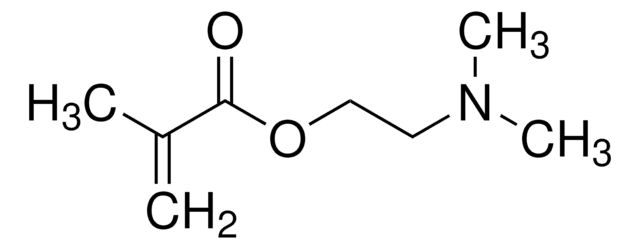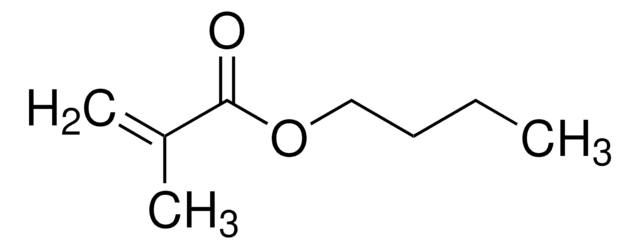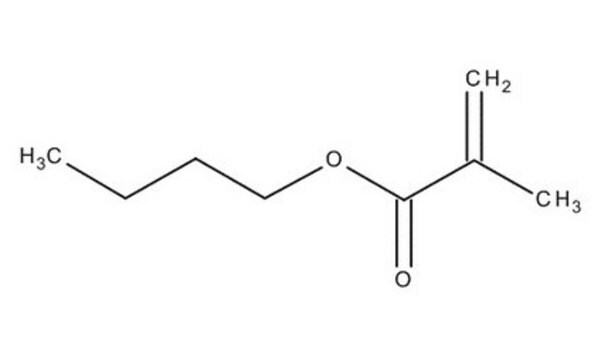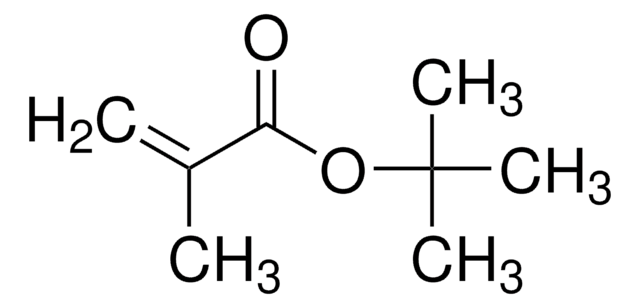Key Documents
Y0001487
Butyl methacrylate
European Pharmacopoeia (EP) Reference Standard
About This Item
Polecane produkty
klasa czystości
pharmaceutical primary standard
gęstość pary
4.91 (15 °C, vs air)
ciśnienie pary
2 mmHg ( 20 °C)
rodzina API
butylated methacrylate copolymer
temp. samozapłonu
562 °F
granice wybuchowości
2-8 %
producent / nazwa handlowa
EDQM
współczynnik refrakcji
n20/D 1.423 (lit.)
tw
162-165 °C (lit.)
gęstość
0.894 g/mL at 25 °C (lit.)
Zastosowanie
pharmaceutical (small molecule)
format
neat
temp. przechowywania
2-8°C
ciąg SMILES
CCCCOC(=O)C(C)=C
InChI
1S/C8H14O2/c1-4-5-6-10-8(9)7(2)3/h2,4-6H2,1,3H3
Klucz InChI
SOGAXMICEFXMKE-UHFFFAOYSA-N
Szukasz podobnych produktów? Odwiedź Przewodnik dotyczący porównywania produktów
Opis ogólny
Zastosowanie
Opakowanie
Inne uwagi
produkt powiązany
Hasło ostrzegawcze
Warning
Zwroty wskazujące rodzaj zagrożenia
Zwroty wskazujące środki ostrożności
Klasyfikacja zagrożeń
Eye Irrit. 2 - Flam. Liq. 3 - Skin Irrit. 2 - Skin Sens. 1 - STOT SE 3
Organy docelowe
Respiratory system
Kod klasy składowania
3 - Flammable liquids
Klasa zagrożenia wodnego (WGK)
WGK 1
Temperatura zapłonu (°F)
119.3 °F - closed cup
Temperatura zapłonu (°C)
48.5 °C - closed cup
Wybierz jedną z najnowszych wersji:
Certyfikaty analizy (CoA)
Przepraszamy, ale COA dla tego produktu nie jest aktualnie dostępny online.
Proszę o kontakt, jeśli potrzebna jest pomoc Obsługa Klienta
Masz już ten produkt?
Dokumenty związane z niedawno zakupionymi produktami zostały zamieszczone w Bibliotece dokumentów.
Klienci oglądali również te produkty
Nasz zespół naukowców ma doświadczenie we wszystkich obszarach badań, w tym w naukach przyrodniczych, materiałoznawstwie, syntezie chemicznej, chromatografii, analityce i wielu innych dziedzinach.
Skontaktuj się z zespołem ds. pomocy technicznej








